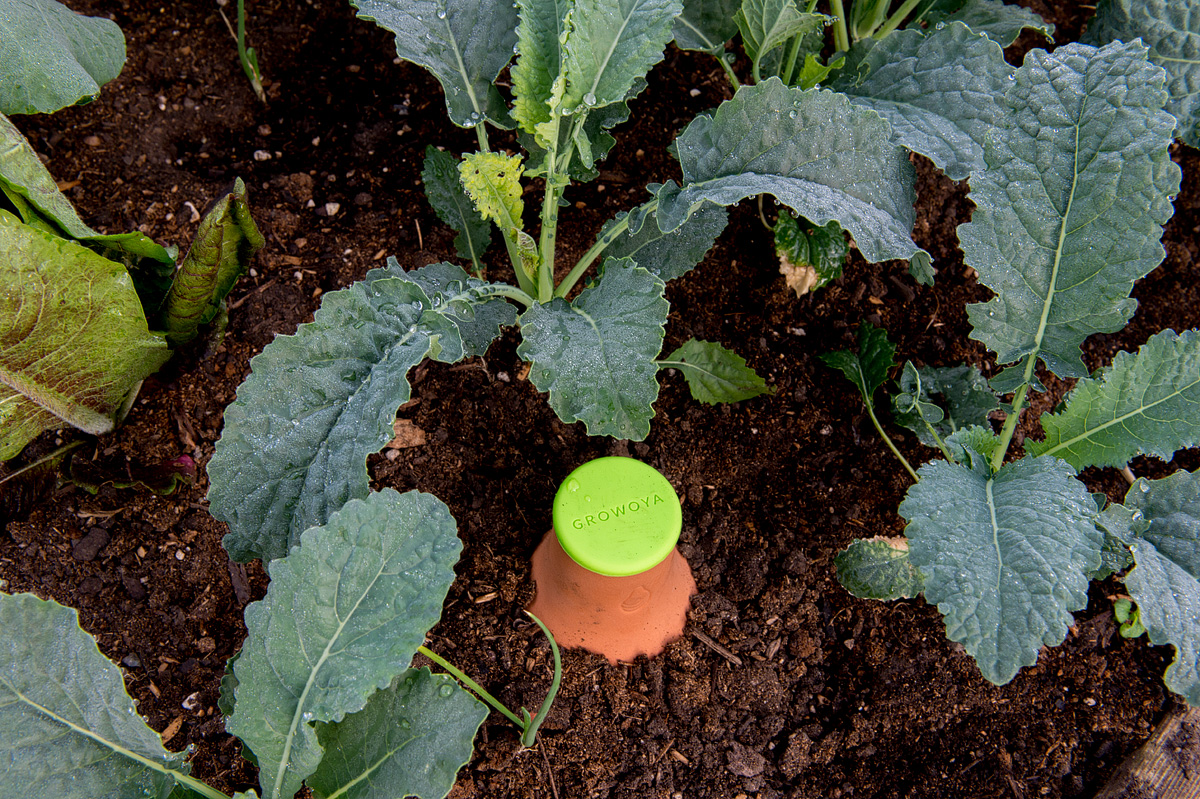Before water came out of hoses, irrigation systems, and sprinklers, farmers of the past had to keep a close eye on their water resources. It turns out that one of their tools could actually have a positive impact on modern day organic gardening as well. Meet the olla.
The History of the Olla
Ollas are unglazed pots clay pots used to efficiently irrigate gardens. Many have a bottle or tapered neck. They’re buried in the ground, leaving the top of their neck above the ground. The olla is filled with water, allowing for below surface irrigation. There’s evidence that the olla was used more than 4,000 years ago in ancient North African and Chinese civilizations. According to Permaculture News, the technique is still used today across the Middle East, Africa, South America, and India.
A new company called GrowOya is trying to increase use in the U.S. by teaching us how to use this super simple gardening tool. If your garden ends up either wilted or drowned, this might be the answer to your brown thumb woes.
How Ollas Work
Ollas are a super efficient means of irrigating your garden because they don’t allow for the free flow of water. The clay pot is semi permeable and because the plants surrounding the olla have a natural suction force that draws water molecules toward their roots, the surrounding plants slowly slurp up the water inside the olla. Often, the top of the olla is covered with a flat rock and the above ground portion of the olla is glazed to prevent the evaporation of water from the pot. Depending on the soil, climate, and the surrounding plants, an olla may need to be refilled every week or every few days.
The Benefits of Ollas
Ollas are most appealing for sustainability reasons. Unlike other irrigation methods, ollas prevent any leftover water from evaporating. The plants only use what the olla provides. It’s also a simple, time-saving method of caring for your garden. All you have to do is plant your olla, fill it up with water, and then walk away. Choose the correct size olla for the size of your garden. What’s more, it looks pretty cool.
Tips for Gardening With Your Olla
Your olla is circular, which means that it waters your plants in a circular manner. When it comes to planting your ollas, you’ll want to plant your thirstiest plants closest to the olla and then go from there. Plants with longer root systems are the best at sucking the water molecules from your olla, so they can be planted further away from it.
When you’re planting saplings, you may need to water the surface of the plant a few times to get the plants going and then you can let the olla do its work. Choose the size of your olla depending on the size of your garden. GrowOya makes pots in three sizes and, according to the company, their small version is made for patio and porch plants, the medium size is great for large planters and the large size is ideal for raised beds or your garden.
How to Make Your Own Olla
While you can buy them from GrowOya, you can also make them yourself. Although they don’t look quite as cool. Here’s how:
- Gather your pots. Start with two unglazed pots of your desired size.
- Seal the bottom of the olla so that water cannot get out. You can seal it with tile or any non-permeable material.
- Stack another clay pot that’s the same size rim to rim and glue them together using Gorilla Glue. It’s waterproof and super strong.
- Put weights on top of your homemade ollas to give the glue time to dry completely so it stays in place.
- Dig a hole and insert your new olla. Leave the top hole of the olla above the surface. The hole in the top pot should obviously not be sealed.
Other Water Conservation Tips in Your Garden
Beyond using an olla, there are a number of other easy tips that can help you conserve water in the garden.
- Choose native plants. They’re supposed to be there, so they use much less water than non-native plants. Succulents also require less water.
- Don’t overcrowd plants and don’t choose plants that are going to get much larger than you need. The larger the plant, the more water it requires.
- Use mulch, tons of it. Mulch, whether it’s tree bark, pine needles, or whatever form of natural mulch you use, helps reduce water waste by sealing out water sucking weeds.
- Green does not necessarily include your lawn. Limit the size and scope of your lawn. Consider adding in raised beds instead.
- Plant early. The earlier you plant your garden, the better. Plant your garden early in the season when it’s cooler. You’ll end up watering less because by the time the summer sun is in full effect, your plants will have enough of a root system so that they don’t require as much water.
- Drip irrigation is another method of water conservation that you might want to consider. Although it’s a little but more complicated than an olla.
Have you ever heard of an olla? Do you have one in your garden? What others ways do you conserve water in your organic garden? We want to know! Drop us a line via Twitter @OrganicAuthorit.
Related on Organic Authority
5 Tips for Starting A Sustainable Vegetable Garden
Yep, Your Little Community Garden Will Save the World
Gardening for Beginners: 10 Questions Every Beginner Has

